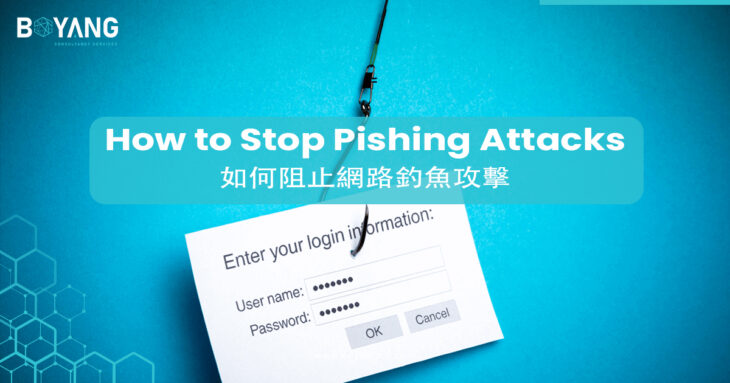
How to stop phishing attacks? A a big question and problem for every organization and security teams everywhere in the world. It can also inflict long-term damage to an organization’s reputation. Cybercriminals use email, SMS, and voice calls to trick people and steal their sensitive information. The shift to remote work during the COVID-19 pandemic has made this issue even worse. Studies have shown that the phishing scam is the most common form of cybercrime, with estimate 3.4 billion spam emails sent every day. Because of this issue, Monetary Authority of Singapore (MAS) has announced to replace all OTPs with digital tokens in banking system. These phishing attacks can lead to account theft, data breaches, hijack your usernames, passwords, and malware infections. But with the right online security methods and knowledge, you can ensure maximum protection against phishing attacks. How to stop phishing attacks, a complete guide we have made to keep you updated and help spread awareness.
How to Recognize Phishing Attacks?
Cybercriminals use various methods to steal sensitive information such as passwords, account numbers, and Social Security numbers. If successful, they can access your email, bank accounts, or sell your details to other scammers. They continually adapt their strategies to align with current news or trends, creating deceptive storylines to manipulate you into clicking on a link or opening an attachment. These messages may imitate companies or institutions you trust, like banks, credit card companies, or utility providers. Despite their appearance, below are some messages are likely from scammers to recognize phishing attacks:
- Claim to have detected suspicious activity or login attempts
- Assert there is an issue with your account or payment information
- Request confirmation of personal or financial details
- Attach unidentified invoices that are fraudulent
- Encourage you to click on a payment link embedded with malware
- State that you qualify for a government refund
- Offer counterfeit coupons for free items
Legitimate companies will not email or text you a link to update payment information. Phishing emails can have severe consequences, including identity theft and reputational damage to impersonated companies.
How to Protect against Phishing Attacks?
Even with strong spam filters, phishing emails can slip through Phishing Attacks. How to protect against phishing attacks? Here are ten effective ways to protect yourself:
- Know What a Phishing Scam Looks Like: Stay informed about the latest phishing attack methods and their key identifiers.
- Get Free Anti-Phishing Add-Ons: Install free browser add-ons that alert you about known phishing sites.
- Conduct Security Awareness Training: Educate employees on identifying and reporting suspicious emails through regular training.
- Use Strong Passwords & Enable Two-Factor Authentication: Implement strong, unique passwords and enable two-factor authentication for extra security.
- Don’t Ignore Update Messages: Keep your software and browser updated to protect against known vulnerabilities.
- Exercise Caution When Opening Emails or Clicking Links: Avoid clicking links or downloading attachments from unknown senders.
- Don’t Give Your Information to Unsecured Sites: Only enter sensitive information on websites with “https” and a closed padlock icon.
- Don’t Be Tempted by Pop-Ups: Use ad-blocker software to block malicious pop-ups.
- Rotate Passwords Regularly: Regularly change your passwords to prevent ongoing attacks.
- Implement Anti-Phishing Tools: Use tools and technologies that detect and block fraudulent websites and emails.
How Many Types of Phishing Attacks?
Understanding the different types of phishing attacks is key for everyone and can empower you to protect your organization’s assets. Here are some common types of phishing attacks:
- Spear Phishing: Targets specific individuals within organizations.
- Vishing: Uses phone calls to deceive individuals.
- Smishing: Conducts attacks through text messages.
- Quishing: Uses QR codes to direct users to malicious sites.
- HTTPS Phishing: Sends emails with links to fake secure websites.
- Pharming: Redirects users to fake websites.
- Pop-up Phishing: Uses pop-ups to trick users.
- Evil Twin Phishing: Uses fake Wi-Fi networks.
- Watering Hole Phishing: Infects frequently visited websites.
- Whaling: Targets high-level executives.
- Clone Phishing: Replicates previous emails.
- Social Engineering: Manipulates individuals psychologically.
- Angler Phishing: Uses fake social media posts.
- Image Phishing: Hides malicious files within images.
- Man-in-the-Middle (MTM) Attacks: Intercepts information exchanges.
- Website Spoofing: Creates fake websites.
- Domain Spoofing: Impersonates company domains.
- Search Engine Phishing: Uses fake products in search engine results.
How to Report Phishing Attack?
If you receive a phishing email or phishing text message, report a phishing attack as soon as possible. Forward that phishing email or phishing message quickly us at contact@boyangcs.com. Our team of cyber experts is ready to provide end-to-end network and cyber security. 聯繫我們進行 to get our free consultation today and learn more.